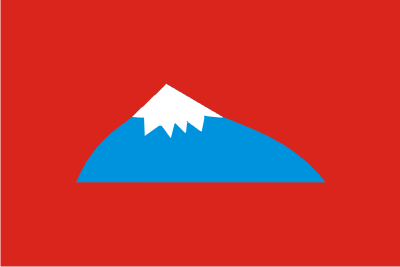History of the Canarian flag (III)
Literary allusions
On the other hand, the first literary allusion to a Canarian flag is included in a poem written by a journalist born in Lanzarote and resident in Madrid, José Betancor Cabrera, who published under the pseudonym Angel Guerra a narrative of local customs and manners. In his only book of poetry, titled Allá (There), written in the Spanish capital in 1902 and published in Las Palmas de Gran Canaria in 1904, is included the poem A la driza. Se utiliza para identificar o representar a una persona o grupo de personas. También puede servir para transmitir señales. El estudio de las banderas se conoce como vexilología.">bandera es una pieza de tela, normalmente rectangular, aunque puede adoptar formas muy variadas, que se sujeta por uno de sus lados a un asta, o se cuelga de una driza. Se utiliza para identificar o representar a una persona o grupo de personas. También puede servir para transmitir señales. El estudio de las banderas se conoce como vexilología.">Bandera (To the Flag), whose verses say:
You boast With the most beautiful colours White, with white of glory, blue, with blue of sky (...) Flag, mantle of virgin you do not know how much I love you! You have no colour of blood you have colours of sky!
In this poem Angel Guerra limits himself to describe the colours of what is for him the Canarian flag, whilst not specifying their arrangement. These colours coincide with those of the first registry flag, though blue is mentioned as ‘of sky’, and not as the traditional navy blue that will appear in all the flags from the registry ones to the current flag of the Autonomous Community (except the one hoisted by the independentist movement, indeed including the sky blue shade); however, this allusion to the sky could be a mere poetical resort forced by the rhyme.
Other literary allusion to a flag for the Canary Islands can be found in a poem by the federal republican politician from Tenerife Nicolás Estévanez Murphy, seemingly written in 1893 and published in the newspaper Las Canarias y nuestras posesiones africanas (The Canary Islands and our African possessions), edited in Madrid, on 19 May 1907. In this poem the author exposes his idea of autonomy for the archipelago within the Spanish unity, according to his federalist and republican ideology:
(...) The Spanish flag
will always be the flag of my fatherland.
But under the shade of the august cloth,
with the colours of mother Spain,
will shine before the world
the tri-coloured Canarian flag;
flag that in my dreams
appears red, blue and white;
in a red cloth,
the blue snow-capped Teide
(...)
Though there is no record of this design becoming an actual flag, we can hazard a guess of its appearance through this description:

